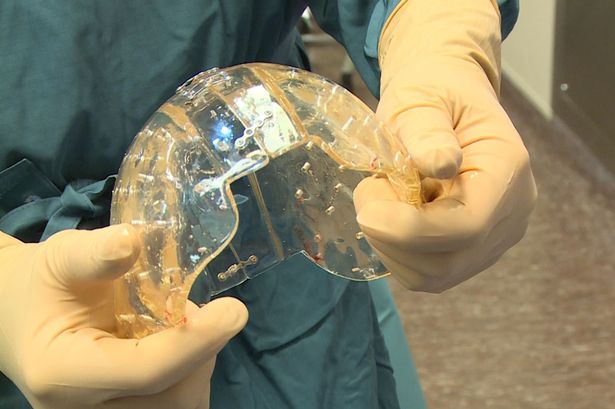Bone covering the brain is usually around 1.5cm thick but the subject’s was 5cm, causing pressure and sight loss – surgeons carried out the world first op in Holland.
Part of a woman’s skull has been replaced with a plastic cranium – made using a 3D printer.
Bone covering the brain is usually around 1.5cm thick but the 22-year-old’s was 5cm and caused pressure and sight loss.
Surgeons carried out the world first op in Utrecht, Holland, three months ago.
Neurologist Dr Ben Verweij explained: Implants used to be made by hand in the operating theatre using a sort of cement which was far from ideal.
Using 3D printing we can make one to the exact size. This not only has great cosmetic advantages, but patients’ brain function often recovers better than using the old method.
The patient has her sight back entirely, is symptom-free and back to work. It is almost impossible to see that she’s ever had surgery.”
Though the Dutch operation is considered the first full-skull transplant using 3D printing, an American man in 2013 underwent a similar surgery, in which 75 percent of his skull was replaced with an implant printed by 3D technology.






